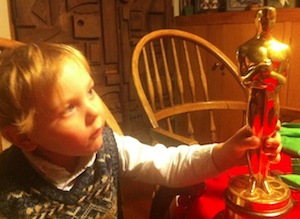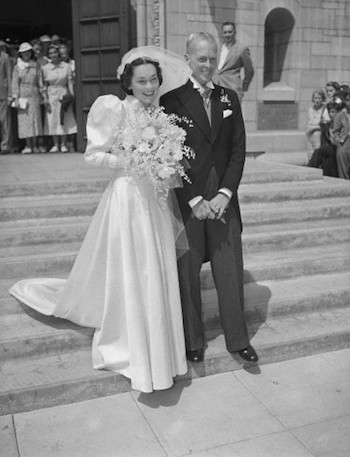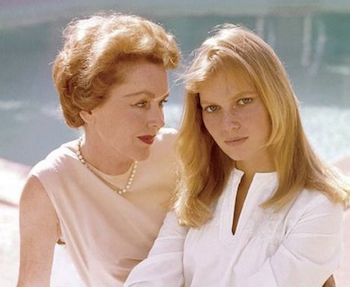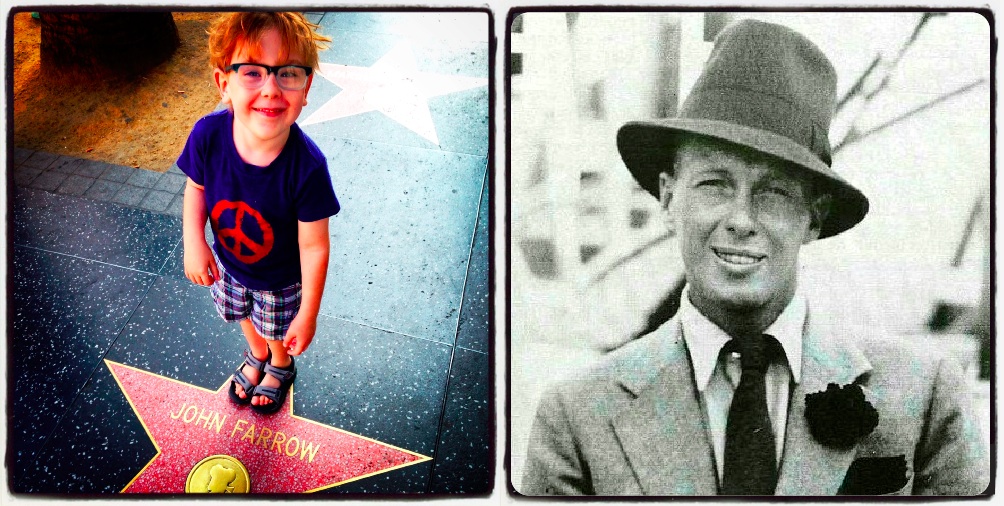 A weekly feature in which my five-year-old son is let loose on the Hollywood Walk of Fame, one of the most popular tourist attractions in Los Angeles, and chooses a star from among the more than 2,500 honorees. His “random” picks sometimes reveal unexplained connections such as the summer day in 2012 when he sat down on the star of actress Celeste Holm and refused to budge. We later learned that the Oscar-winning actress had died only hours earlier. There are five categories on the Walk of Fame: motion pictures, television, radio, music and theater but Charlie tends to favor the movies.
A weekly feature in which my five-year-old son is let loose on the Hollywood Walk of Fame, one of the most popular tourist attractions in Los Angeles, and chooses a star from among the more than 2,500 honorees. His “random” picks sometimes reveal unexplained connections such as the summer day in 2012 when he sat down on the star of actress Celeste Holm and refused to budge. We later learned that the Oscar-winning actress had died only hours earlier. There are five categories on the Walk of Fame: motion pictures, television, radio, music and theater but Charlie tends to favor the movies.
I’m not sure why I included the parenthetical “Mia’s Dad” in the title for Charlie’s current Walk of Fame pick — John Farrow was certainly renowned in his own right. Born in Sydney, Australia, on February 19, 1904, Farrow left his homeland when he was in his teens as a sailor in the Merchant Service and traveled throughout the Pacific. He happened to meet famed filmmaker Robert Flaherty during one sea voyage and became fascinated with the idea of writing for the movies. When he first came to Hollywood, Farrow first found work as a consultant for ship-related movies and he started writing screenplays for films such as A Sailor’s Sweetheart (1927) with a very young Myra Loy, Ladies of the Mob (1928) with Clara Bow, The Woman from Moscow (1928) with Pola Negri, and A Woman of Experience (1931) with Helen Twelvetrees and Zasu Pitts.
 Farrow dated many starlets during his early years in Hollywood. In 1933, he was arrested right on the dance floor of the Coconut Grove as part of a government crackdown on “aliens” in the movie industry. Farrow’s visa had expired and for some reason, his passport claimed he was a Romanian consular official. He was placed on five years probation and the charges were eventually dismissed. Farrow’s goal at this point was to become a director. At MGM, he got the chance to work on Tarzan Escapes (1936) but was replaced as director after some of his footage was rejected as too suggestive. Before leaving the film, Farrow fell in love with Tarzan’s Jane, Maureen O’Sullivan, an actress he had met several years earlier. To woo 25-year-old O’Sullivan, Farrow converted to Catholicism and had his brief first marriage annulled. The Irish actress sought and received a Papal dispensation that would allow her to marry Farrow and the happy couple tied the knot on September 12, 1936. The marriage lasted until his death and produced seven children: Michael, Patrick, John, Mia, Prudence, Stephanie, and Tisa.
Farrow dated many starlets during his early years in Hollywood. In 1933, he was arrested right on the dance floor of the Coconut Grove as part of a government crackdown on “aliens” in the movie industry. Farrow’s visa had expired and for some reason, his passport claimed he was a Romanian consular official. He was placed on five years probation and the charges were eventually dismissed. Farrow’s goal at this point was to become a director. At MGM, he got the chance to work on Tarzan Escapes (1936) but was replaced as director after some of his footage was rejected as too suggestive. Before leaving the film, Farrow fell in love with Tarzan’s Jane, Maureen O’Sullivan, an actress he had met several years earlier. To woo 25-year-old O’Sullivan, Farrow converted to Catholicism and had his brief first marriage annulled. The Irish actress sought and received a Papal dispensation that would allow her to marry Farrow and the happy couple tied the knot on September 12, 1936. The marriage lasted until his death and produced seven children: Michael, Patrick, John, Mia, Prudence, Stephanie, and Tisa.
Finally making the transition to director, Farrow helmed films such as Men in Exile (1937), Five Came Back (1939), and Wake Island (1942), which earned him an Academy Award nomination. Following that success, Farrow’s films included The Hitler Gang (1944), Two Years Before the Mast (1946), The Big Clock (1948), Where Danger Lives (1950), His Kind of Woman (1951), and Hondo (1953). He occasionally still wrote screenplays, sometimes directing them as well, such as the Betty Hutton musical Red, Hot and Blue (1949) and his final film, the biopic John Paul Jones (1959) starring Robert Stack and featuring a cameo by Bette Davis as Empress Catherine the Great as well as a bit part for Farrow’s 14-year-old daughter Mia. In 1956, Farrow won the Best Adapted Screenplay Oscar for co-writing Michael Todd’s Around the World in Eighty Days.
 John Villiers Farrow died suddenly at his Beverly Hills home of a heart attack on January 27, 1963 at the age of 58. Though he was not in favor of his children entering the business, Mia Farrow’s career took off the following year when she was cast as Allison Mackenzie in Peyton Place. She would go on to achieve great fame in the movies and in her personal life thanks to high-profile marriages to Frank Sinatra and André Previn and her long-term relatiaonship with Woody Allen that, of course, ended in scandal. Mia would end up having 15 children (4 biological and 11 adopted). John Farrow’s widow, Maureen O’Sullivan, lived 35 more years and acted well into her seventies. In addition to his work in the film industry, John Farrow published two novels, two historical biographies, a collection of poetry, and a history of the papacy.
John Villiers Farrow died suddenly at his Beverly Hills home of a heart attack on January 27, 1963 at the age of 58. Though he was not in favor of his children entering the business, Mia Farrow’s career took off the following year when she was cast as Allison Mackenzie in Peyton Place. She would go on to achieve great fame in the movies and in her personal life thanks to high-profile marriages to Frank Sinatra and André Previn and her long-term relatiaonship with Woody Allen that, of course, ended in scandal. Mia would end up having 15 children (4 biological and 11 adopted). John Farrow’s widow, Maureen O’Sullivan, lived 35 more years and acted well into her seventies. In addition to his work in the film industry, John Farrow published two novels, two historical biographies, a collection of poetry, and a history of the papacy.


